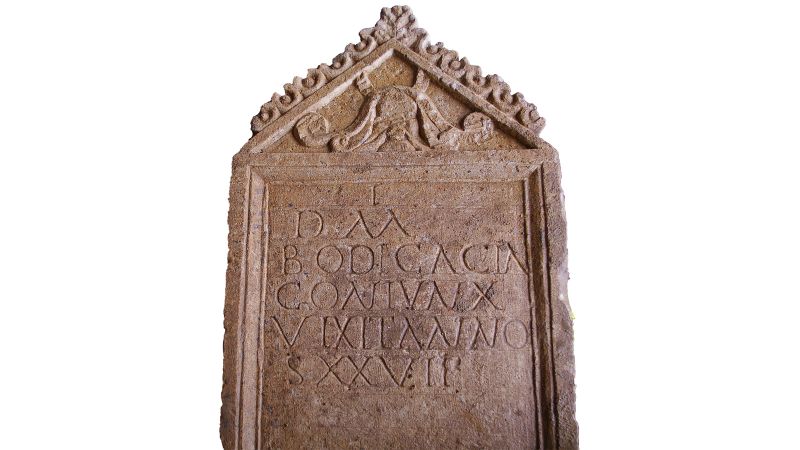Rare Roman Tombstone Discovered in Gloucestershire
A remarkable Roman tombstone, recently unearthed in Gloucestershire, England, has piqued the interest of archaeologists and history enthusiasts alike. This well-preserved artifact dates back to the 2nd century AD and provides vital insight into the burial practices during the Roman era.
Discovery Details

Significance of the Tombstone
The inscription on the tombstone reads: “To the spirits of the departed/Bodicacia/faithful wife/died aged 27.” This translation, conducted by experts, emphasizes the personal nature of the burial and the cultural practices of the time. The meticulous craftsmanship of the stone, along with the carving believed to depict Oceanus, the god of the sea, indicates the cultural richness of the period.
Connection to the Skeleton

This tombstone was discovered alongside a skeleton, a combination that is noteworthy in archaeological contexts. Experts believe that examination of the skeleton could reveal critical data about the individual’s gender, age at death, and dietary habits, as well as whether the person was local to the area.
Further Investigations
The examination of this artifact marks an exciting chapter in Roman studies, offering an opportunity to deepen our understanding of early British society and its burial customs. Archaeologists will be conducting further studies not just on the tombstone itself but also on associated finds to reconstruct the historical narrative surrounding this unique burial.
Conclusion
The discovery of the Roman tombstone in Gloucestershire highlights the importance of archaeology in unveiling the past. Such finds serve as a reminder of the interconnectedness between contemporary society and its historical roots. Future investigations will undoubtedly shed more light on the intricacies of Roman life in Britain, enriching our appreciation of this fascinating period.
© 2024 iBestTravel. All Rights Reserved.




